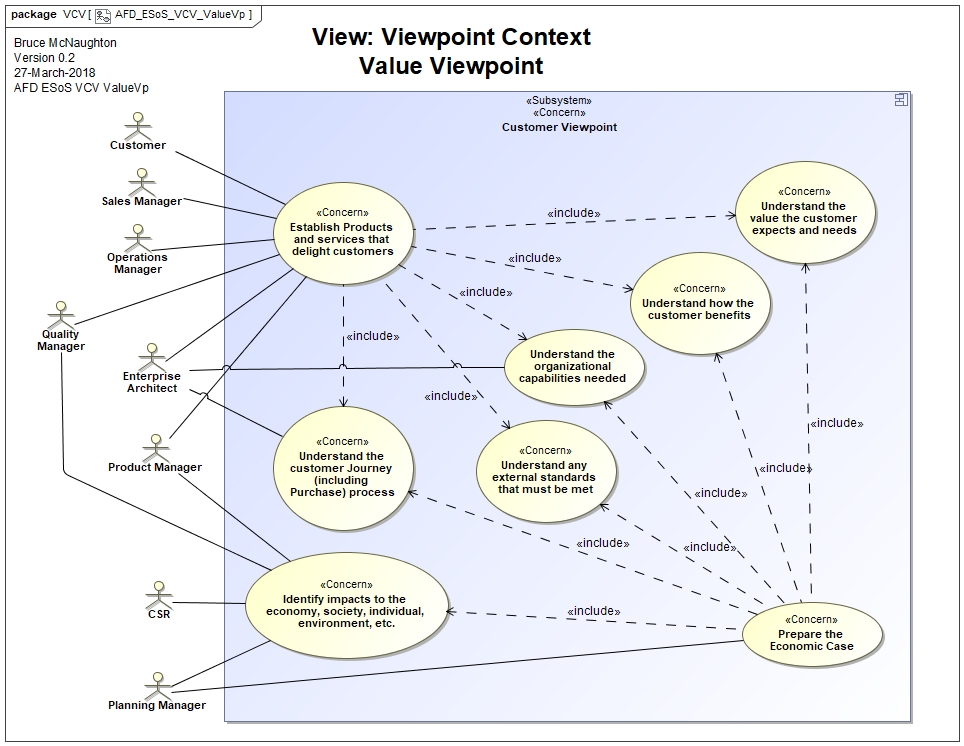Value Viewpoint
Description
The Value Viewpoint describes the approach to creating the Value View for an Architecture Description.
Without customers that consume the products and services, the organization will not be viable or sustainable.
This viewpoint focuses on the customer and the value they receive and their needs for a product or service. Understanding these needs and expectations ensures that the right products and services are developed. Integrating customers into the definition and acquisition of products and services is key.
Customers interact with the three top level capability areas.
- New Product / Service Development and Innovation (Improvement and Innovation Capabilities)
- Production, Delivery and support of products / services (Delivery and Support Capabilities)
- Customer Complaints and feedback (Management Capabilities)
Rationale
- This viewpoint allows the whole organization to be seen from the customer's perspective. People in the organization need to step out of their view and see what the customer experiences and the value they receive. This experience may not be what is desired.
- The customer also needs to have reassurance that the organization will continue to deliver products and services into the future. This comes from any demonstrated performance in all areas of the organization.
- This view provides inputs to the definition of the entire value system in the organization view.
- This value view is the basis for the value dimension of the Operating Model. This dimension focuses on the business units or product lines that deliver value to customers.
Stakeholders and their Concerns

Ontology Concepts and System Descriptions
System Descriptions: Enterprise, Organization.

Models
Steps to Create the View
- Understand market / customer needs / value
- Understand the Customer Journey (buying and use process)
- Understand the competitive / future market potential
- Identify the organizational capabilities required to:
- Develop products and services
- Produce, deliver and support products and services
- Establish or update a Business Model / Plan
- Establish a product / service portfolio / catalogue
Correspondences
- CR01: Separation of Business Plans (target operating models)
- CR02: Overhead Calculations (based upon contribution and budget).
- CR03: Align with the Strategic Plan.
Examples
- Customer Journey
- Product / Service Portfolio / Catalogue.
Sources
- Competitive Advantage, Michael E. Porter
- Competitive Strategy, Michael E. Porter
- Exploring Strategy, Gerry Johnson and Richard Whittington and Kevan Scholes
- Exponential Organizations, Salim Ismail
- Lean Thinking, James P. Womack and Daniel T. Jones
- Management: Tasks, Responsibilities and Practices, Peter Drucker
- Managing the Nonprofit Organization, Peter F. Drucker
- The Essential Advantage, Paul Leinwand and Cesare Mainardi
Notes
This provides an integrated view across:
- Management Capabilities
- Design, Develop and Change Capabilities
- Product and / or Service Provision Capabilities or operational capabilities
Objects produced by processes in the organization.
- Product Service Catalogue
- Product Service Portfolio
- 5 year P/L by product / service